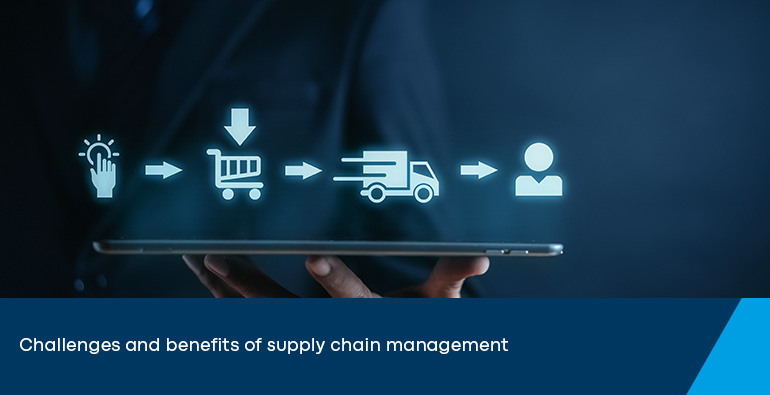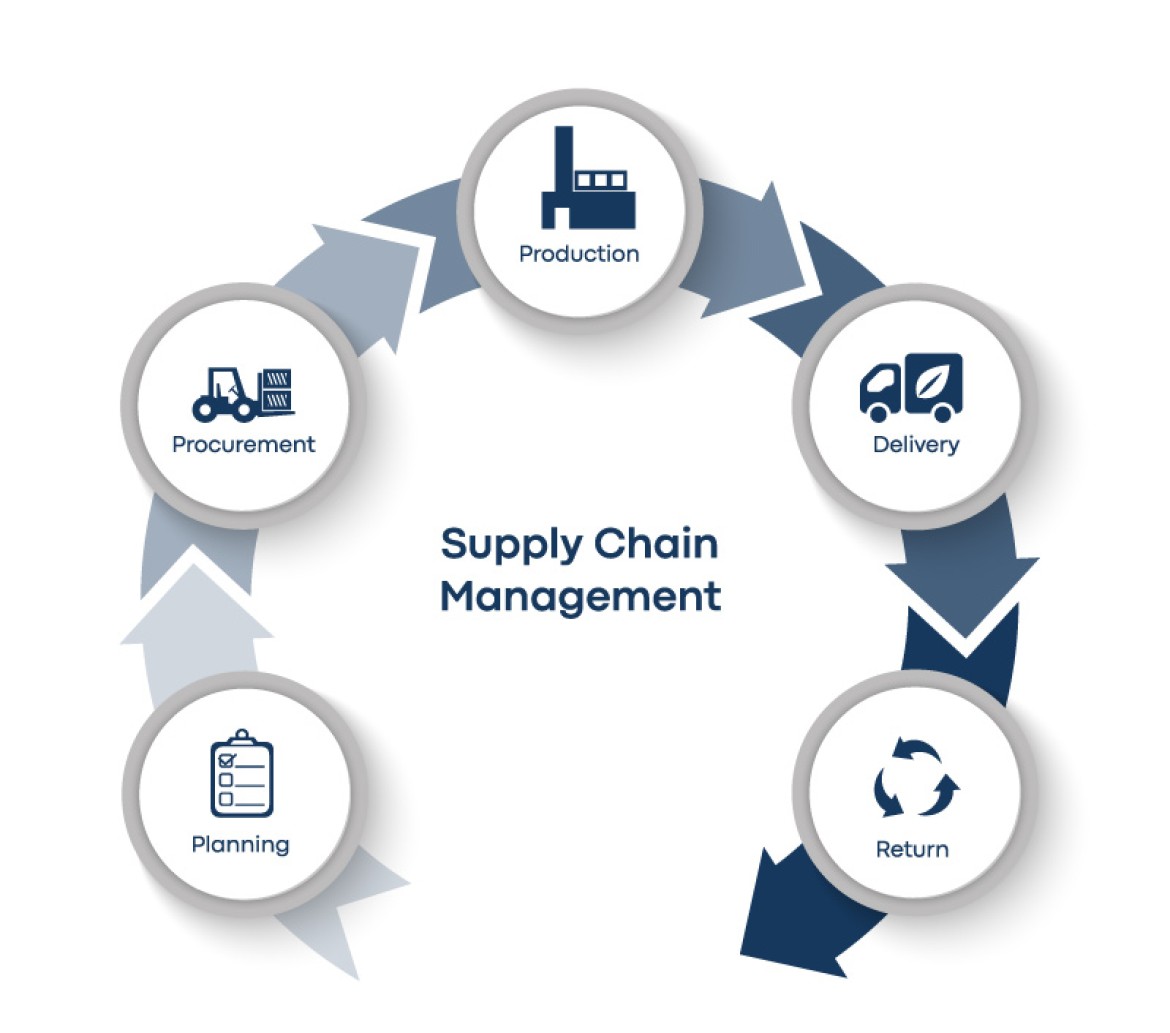How innovative tools and technologies can give your supply chain management wings

It is intended to breathe more humanity back into the complex processes of globalization: the new Supply Chain Duty of Care Act (Lieferkettensorgfaltspflichtengesetz, the “Act”), or Supply Chain Act for short, came into force on the first of January, 2024, and contains requirements for compliance with human rights and environmental protection. What appears to be absolutely worthy of support from a humanistic perspective, however, entails extremely complex requirements in business practice. Even companies with 1,000 or more employees are now faced with the enormous challenge of implementing clearly defined due diligence obligations along their supply chain. And the company’s own supply chain for which it is responsible is by no means limited to its own business area: The actions of contractual partners, suppliers, and subcontractors must also be thoroughly scrutinized. This is because the law requires the identification, minimization, or avoidance of risks along the entire, sometimes global, supply chain that lead to violations of human rights or damage the ecosystem. Monitored by the Federal Office for Economic Affairs and Export Control, fines of up to eight million euros, or up to two percent of annual turnover from 400 million euros, can be imposed on companies that do not adequately align their business activities with the aforementioned due diligence obligations.
The good news is that anyone who is concerned about how this mammoth corporate task can be accomplished for the entire supply chain can breathe a sigh of relief. Because in times of digital transformation of the supply chain, digital solutions for strategic risk management can also help. Thanks to the innovative use of technologies such as big data or supply chain analytics, they represent a reliable support in the area of supply chain management (SCM) in order to meet the diverse requirements with confidence.
In this article, you can read about the benefits of using supplier risk management software, or SRM software for short, particularly in the important SCM subarea of supply chain management.
Definition: What is supply chain management?
It all starts with the raw material: Supply chain management accompanies it on its way into and through production all the way to the finished product, which ends up in the hands of customers via logistics. In business practice, this value chain often comprises a complex network of players such as raw material producers, subsuppliers, internal suppliers, manufacturers, external service providers, distributors, and retailers, and finally the customers. The tasks for supply chain management in controlling material and information flows are complex. Essentially, however, the aim is to optimize the entire value chain as efficiently as possible at the lowest possible cost and in line with customer requirements.
To achieve this, processes in the following three areas need to be managed accordingly:
- Information: All participants along the supply chain should be able to communicate smoothly with each other so that important information, such as contract conclusions, delivery delays, or incoming goods, can be exchanged reliably and easily.
- Material: Everything that is needed for the products or services offered must be set in motion so that it arrives at the right place at the right time to be processed or delivered. The same also applies in the opposite direction: If goods are returned to the company, for example in the case of bottle deposits or returns, SCM controls the processes to recycle, pass on, or dispose of materials.
- Finances: When do business partners have to pay for services and in what form, on what terms are loans granted or taken, how can payment processes be ideally set up, and who owns the individual components or even the finished product along the supply chain? SCM deals with the answers to these basic questions in the finance subdivision.

If you are looking for a basic overview of all SCM processes end to end along your own supply chain, you can use the established SCOR model, short for “Supply Chain Operations Reference” model, as a guide. The model divides the individual SCM fields of action into five main process categories:
- Planning: SCM managers define a strategy to meet customer needs and also to be able to react as resiliently and flexibly as possible to fluctuations in demand along the supply chain.
- Procurement: In this area, for example, it is decided from which suppliers the required resources are procured. The exact time of delivery and the extent to which stocks are used are determined.
- Production: To be able to produce the goods, the individual production steps must be precisely planned and finally the functionality and quality tested. Solutions also need to be found for storing, packaging, and releasing the products for dispatch—while adhering to all compliance requirements.
- Delivery: Supply chain managers organize the collaboration with logistics partners who deliver the goods to retailers or end customers. They are also in close contact with customer service and manage stocks in warehouses.
- Return: The reasons for returns vary. For example, products may be defective or have been returned within the exchange period. Regardless of this, one of the SCM’s tasks is to manage the returns and initiate appropriate action.
Important partner selection: What to look out for when selecting suppliers
Managing suppliers or subsuppliers means one thing above all: systematic relationship work—with the aim of finding the right suppliers and constantly working together a little better. After all, it is precisely the smooth intermeshing of a company’s own processes with those of its suppliers that makes a major contribution to being able to provide the resources for the development and production of its own products or services as quickly, cost-effectively, and with the highest possible quality. Overall, supplier management revolves around answering the following questions, among others:
- Who comes into question? Identifying potential suppliers
- What potential and what risks are there? Evaluating suppliers using risk management measures
- How does a supplier’s service portfolio compare? Classifying suppliers within a defined procurement strategy
- Where do suppliers need to be developed? Building up qualifications at selected suppliers according to predefined targets
- Who belongs to the supplier base? Final selection of suitable suppliers
- How should onboarding ideally be organized? Integrating suppliers into the network and daily business
- Is the performance accurate? Checking performance with regard to the extent to which suppliers meet targets and legal requirements
The most relevant advantages of software-supported supplier management
The decisive advantages that arise for companies in the course of software-supported supplier management include, for example
- Structured data overview: SCM employees can access supplier data at any time using supplier risk management software—without having to spend time sifting through lists or searching for important delivery documents. This way, they are not only more able to keep an eye on costs incurred, but can also easily identify correlations, bundle information, and prepare decisions. In addition, the increase in transparency means that there is immediate clarity about the consequences should a supplier within the chain fail. Affected services or products as well as other process-related dependencies can be easily identified using software. This makes it much easier to identify and prevent supplier-related risks along the supply chain.
- Audit-proof supplier evaluation and control in no time at all: Do they adhere to compliance requirements? How reliably do they achieve agreed KPIs? How are costs developing—and which contractual features characterize the cooperation? Because the business relationship with suppliers can be monitored and evaluated centrally and systematically using software, this puts companies in a very solid position in contract negotiations, as all relevant information is available at the touch of a button. On the other hand, digital tools make it possible to involve suppliers themselves in the evaluation process. For example, by filling out questionnaires—of course, the software also monitors whether suppliers are fulfilling this obligation conscientiously and, if necessary, initiates measures to ensure a successful evaluation. This saves resources and motivates suppliers in equal measure. In line with the Supply Chain Act, companies can also use digital programs to assess risks within supplier relationships in an audit-proof manner and easily prove this fact thanks to the precise and systematic documentation.
- Harmonization of supplier relationships: It’s not just your own team that will be happy about smoother processes using SRM software in supplier management. The suppliers themselves will also appreciate it if onboarding runs smoothly and user-centered workflows are at the forefront of integration into internal processes. This not only ensures that suppliers are potentially more willing to perform and, for example, are more meticulous about delivering on time. Rather, the mutually transparent software-based relationship work also contributes to a better understanding of the service level agreement—i.e., what the client actually expects from the supplier and how exactly KPIs are to be met. This is an important basis for contractual partners to be able to fulfill their requirements within the supply chain in the first place.
- Quality push of the supply chain: Why do products and services improve by using software in supplier management? Quite simply: control. With the help of special programs, the quality of the delivered items and the entire supplier service can be tracked precisely. Although trust is still the basis of any flourishing business relationship, successful business can only be achieved if companies use systematic measurement and analysis, for example, to ensure that their goods reach trading partners or end customers reliably. SRM software is therefore also an ideal tool for determining exactly which suppliers are performing satisfactorily and which are at too high a risk, for example, due to increased outliers in quality, complaints about production conditions, or complaints. In addition, companies can also define software-controlled measures to counter such a risk situation in supplier relationships quickly and efficiently.
Benefit from our risk-based supplier management, which is part of our comprehensive GRC solution—alongside risk management, audit and compliance management, governance services, and business continuity management. With the OMNITRACKER Governance, Risk and Compliance Center (GRC Center), you can manage all your company’s compliance, audit, control, and risk management requirements centrally and thus benefit from valuable synergies.
Conclusion: Digitally supported supply chain management is groundbreaking for sustainable business
Complying with the Supply Chain Act and thus acting in a legally compliant and responsible manner as a company is no easy task per se. And yet, in view of the complex, digitally networked market situation, this is just one of many aspects that speak in favor of implementing software in your own supplier and supply chain management processes. If you look at the big picture, you will realize that the right tools can be a decisive success factor when it comes to mapping, managing, and controlling an effective supply chain that is based on reliable suppliers as well as high product quality. After all, remaining competitive also means keeping up with the pace of development in a globalized trading landscape and remaining open to innovation. This is a challenge that can increasingly only be met with the help of software-based solutions.